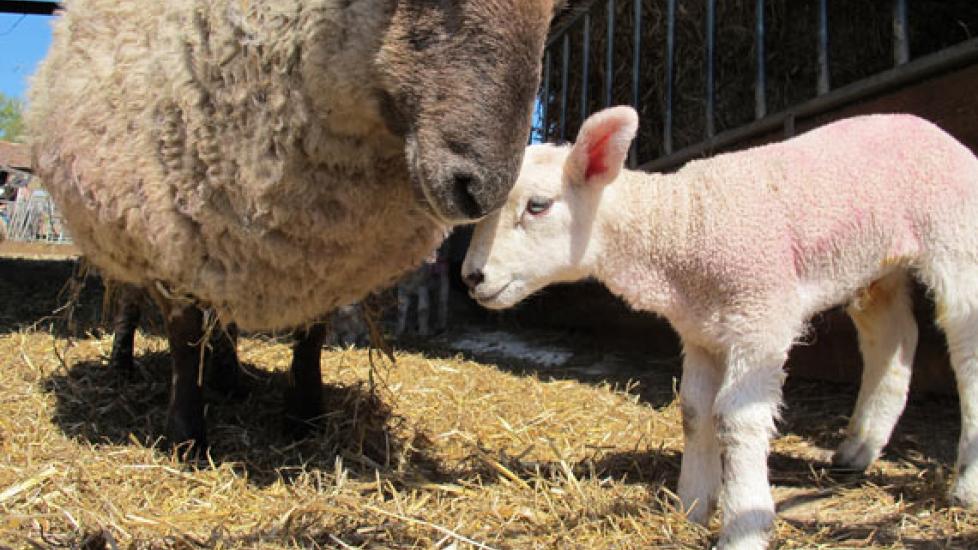Positions, Please - A Birth On the Farm
Since we’re into prime lambing and kidding time now, I thought I’d include you all in a demo of a barn C-section. A ewe is having trouble. Everyone ready? Don’t worry, I’ll tell you what to do.
First, you there, grab two bales of straw. Thanks. Let me give the mama sheep a slight sedative and then we’ll lay her on her right side. I’ll need some bailing twine to tie her legs and head down. Can someone find some twine for me?
OK, now that the ewe is situated on her right side on the straw bales, I’ll need you to stand at her head and comfort her. Your job is to keep her quiet. Thanks.
Now, let me grab my electric clippers and I’ll shave most of her left side. After I do that, I’ll need some water because I’ll be scrubbing her skin clean. I’ll finish with an application of iodine. Also, can someone grab me some towels? Not the nice towels; some old ones you were going to get rid of anyway.
Now that she’s clean, let me set up my surgical tools. Could you grab me another straw bale to act as my surgery table? Thanks. As I set this up, I’ll numb the incision line with some local anesthetic. Then I’ll clean her one more time.
Let’s see here: I’ve got my surgery pack all set out inside its sterile wrap, I’ve got my sterile gloves on, and the ewe is prepped and ready to go.
Now, here’s what’s going to happen: I’m going to make a vertical incision down the flank of this ewe. The uterus will be right below the skin. I will exteriorize the uterus and make an incision into it. Lots of fluid will come out onto your barn floor. Don’t worry, this is normal. Then I’ll start pulling out lambs. I will need someone to hand them to. Volunteers? OK, great.
When I hand you a lamb, I need you to gently swing it upside down to clean the fluid from its nose. This usually happens naturally as the lamb is squeezed out of the birth canal. But, since there’s no birth canal involvement this time, we have to help out. After a few swings — Don’t drop the baby! They’re slippery! — take the towels and rub the little bugger vigorously to dry him and stimulate his breathing. Take a few seconds to make sure he starts breathing on his own. If not, let me know.
There might be one lamb, two, or even three. If there is more than one, they’ll be coming out fast and furious, so be ready! You’re about to have your hands full.
Once all the lambs are out, I sew the uterus back up. I’ll wash out the abdominal cavity with sterile saline in case any uterine fluid dripped in. Now it’s time to sew up mama. How’s she doing up there? Good? Good.
OK, mama is sewed up and cleaned up. Let’s slowly get her off these bales and in a standing position. Ready? One… two… three… OK! She’s standing, and look at that! Already nickering for her babies! Let’s take her over to say hi.
So, in a nutshell, that’s about it. Honestly, the toughest thing about doing a C-section on the farm is finding enough people to help (I like at least two other folks around) and the organization of all my equipment. The surgery itself is straightforward. Afterward, I check to see how much milk the ewe has and direct the client on proper management of the lambs.
C-sections on goats and sheep are my favorite on-farm surgery, no question. They are often rewarding (who doesn’t like to deliver cute lambs or kids?), and are a great way to bond with clients as you hand them babies or have them console the mother. Good vibes all around.
Oh, and thanks for your help. You were great.

Dr. Anna O'Brien
Image: Laurence Gough / Shutterstock
